| India, the land of diversities, shows maximum variety in its enchanting wildlife patterns. From the snow clad peaks of the Himalayas to the dense greens of north east, the desert land of Rajasthan, thick woods of the central India and the waterways of the south – India is blessed with a rich and unique variety of flora and fauna. Conservation and protection of wildlife is still a part of life in rural India. More than 1200 birds and 350 different mammals as well as thousands of fish, amphibians and reptiles are part of Indian wildlife. During the Rajasthan Wildlife and Goa Tour, we have an opportunity to explore Ranthambore, Sariska and Jim Corbett National Park as well as experience the rich cultural heritage of India. The beaches of Goa are also refreshing and exciting enough to make your holidays memorable for a lifetime. |
Day 01: Arrive Delhi
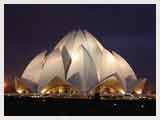
As you arrive at the Delhi Airport, you will be welcomed with full warmth and traditional 'Swagat' (Welcome) ceremony of India. Our representative would assist you and transfer to the hotel for check in. Overnight stay at the hotel.
Day 02: Delhi
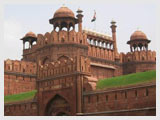
We devote one entire day to explore the historical wonders of Delhi, the 17th century walled city of Shah Jahanabad. Our guided tour starts with the majestic Jama Masjid, the principal mosque of Old Delhi. This 1656 AD structure, by the Mughal Emperor Shah Jahan, is the largest mosque in India. While crossing the colourful market of Chandni Chowk, we reach the Red Fort, a grand red sandstone fort built in 1648 by Shah Jahan. We also pay short visits to Raj Ghat (memorial to Mahatma Gandhi, the Father of the Nation) and India Gate (memorial built in the year 1931 to commemorate the Indian soldiers who died in the World War I & the Afghan Wars).
Apart from these wonders, the President's House (earlier known as Viceroy's House) is a beautiful and huge building showcasing the excellent example of the British architectural pattern. Humayun's Tomb, the memorial of Mughal Emperor Humayun, is also a superb place to visit. Built in 1562, the complex is a World Heritage Site and the first of the Mughal architecture in India. Our last halt is Qutub Minar, built in the year 1206 by Qutub-ud-din Aibek. This tallest brick minaret in the world (72m), is an important example of Indo-Islamic Architecture ans is listed as a UNESCO World Heritage Site. Sound & Light Show at Red Fort with dinner at Chor Bizarre can also be arranged as per requirement.
Overnight Hotel - Delhi (B)
Day 03: Delhi - Sariska (about 180 km)

Today we drive to Sariska Tiger Reserve which is situated in the northern part of Aravali hills. Sariska, declared a Tiger Reserve in 1973, covers an area of about 479 sq km and offers wonderful opportunities to explore the dense woods by Jeep Safaris. Mammals like Sambars, Chitals, Nilgais, Chausinghas, Jackals, Wild boars, langurs etc are spotted very commonly at Sariska Tiger Reserve. If we are lucky enough today we might have an audience with the Tiger which are numerous in this park.
Day 04: Sariska - Jaipur (about 130 km)
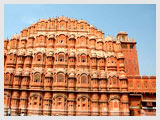
Today we head towards the Pink City Jaipur. This colourful and friendly city serves as the capital of Rajasthan. It has been a place of the Rajput kings, their tales of valor & bravery, world heritage sites, lovely fairs & festivals and incomparable forts and palaces. Founded in 1728 by Maharaja Sawai Jai Singh II, Jaipur is the only city in the world symbolizing the nine divisions of the universe, through nine rectangular sectors. In the afternoon we visit the City Palace which is still the formal residence of the royal family, built in a blend of the Rajasthani and Mughal architecture. In the museum of the city palace we visit the private collection of the Jaipur Maharajas. We continue to Jantar Mantar, a stone observatory, the largest of Jai Singh's five remarkable observatories. Its complex instruments reveal us the secrets of medieval Indian astronomy.
Day 05: Jaipur

After breakfast, our excursion starts with Amber Fort (11 km). We reach this beautiful and majestic palace complex, situated atop a hill, by an elephant ride. This is a lovely and unique experience. Our next halt is the renowned City Palace, which showcases the best of Rajasthani & Mughal architecture. Chandra Palace and several other buildings inside the City palace have excellent art works and decorations. Enroute to Amber we visit the Hawa Mahal (Palace of the Winds), built in 1799 AD. It contains 953 small casements with each having its own balcony. The windows enabled cool air to circulate and the ladies to watch processions below without being seen. In the afternoon we have a walk through the colourful Bazaar of Jaipur and visit a factory to see the famous block printing work being done since centuries in Jaipur. In the evening we drive through the new city of Jaipur and visit 'Laxmi Narayan Mandir', a Hindu temple made out of white marble. We might have an opportunity here to observe a prayer ceremony. Today we have dinner with a presentation of Indian music and dance.
Day 06: Jaipur - Ranthambore (about 200 km)

Today we drive to Ranthambore National Park. After a break & refreshment in Ranthambore we will explore the park on a Jeep. Ranthambore National Park is surrounded by the Vindhyas and the Aravali mountains and covers an area of 392 square km. The Tiger remains the biggest attraction of the Ranthambore National Park.
Day 07: Ranthambore - Agra (about 250 km)
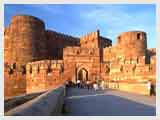
In the early morning, again we leave for jeep safari. After exploring the true beauty of these dense greens, we head towards Agra. En route we visit Fatehpur Sikri, which was once an imperial capital frozen in time, constructed by Akbar the Great in the 16th century. This wonderful city constructed by red sand stones was abandoned as abruptly as it had been built. It has been generally stated that it was due to failing in the water supply. Late evening arrival in Agra. Rest of the day at leisure.
Day 08: Agra - Delhi

Our Agra sightseeing trip starts with the Agra Fort. Mughal Emperor Akbar laid the foundation of this majestic structure in 1565, which was later completed by his grandson Shah Jahan. Our next halt is the most beautiful and spell binding monument – the Taj Mahal. This symbol of love (built in pure white marble by Shah Jahan for his beloved wife Mumtaz Mahal) is one of the seven wonders of the world. We spend evening visiting the bazaar (market) where the local artisans do the famous fine marble inlay work. In the afternoon after the visit of Taj Mahal we drive to Delhi. Arrive in Delhi in the evening.
Day 09: Delhi - Corbett
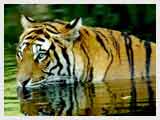
After breakfast we drive to Corbett National Park. Rest of the day at leisure.
Day 10: Corbett
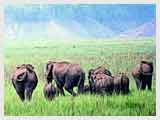
Full day visit of Corbett National Park.
Day 11: Corbett - Delhi - Goa

After having the breakfast drive to Delhi. In the evening we drive to the airport for the flight to Goa. Arrival in Goa and check in the Hotel and rest of the time at leisure.
Day 12 - 13:Goa

Day at leisure in Goa to explore the destination on your own.
Day 14: Goa – Mumbai: Departure Flight
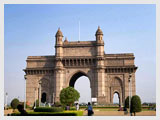
In the afternoon we take flight from Goa to Mumbai. In Mumbai we have rest of the day at leisure. Rooms are available to get fresh and change before we depart for the airport with our representative. Around Midnight flight back to the home destination.
Tour concludes. Caper thanks you for your patronage and ensures a punctual transfer to the Railway Station / Airport for your onward travel.
Ask our Travel Experts!